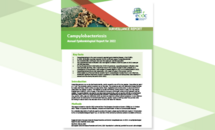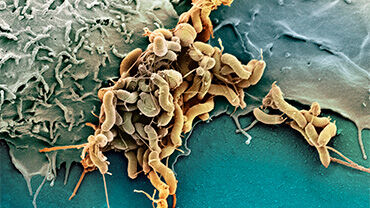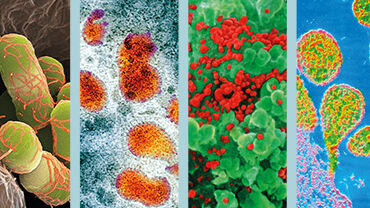Campylobacteriosis - Annual Epidemiological Report for 2022
Campylobacteriosis is an acute diarrhoeal enteritis, mainly caused by one of the two species: Campylobacter jejuni or C. coli. The incubation period is typically two to five days. The symptoms start with abdominal cramps followed by watery diarrhoea, which is often accompanied by fever, headaches and muscle aches. In about one-third of cases blood may appear in stools. The infection is usually self-limiting, lasting around a week, but may require hospital care in about 5−10% of cases. If the infection is severe or prolonged, antimicrobial treatment may be needed. The acute infection may lead to rare late-onset complications, such as reactive arthritis or Guillain-Barré syndrome (GBS), which is an acute neuromuscular paralysis. Campylobacter bacteria are common in animals (e.g. poultry, cattle, pigs and wild birds) which can serve as reservoirs without clinical symptoms. Human infection usually occurs via consumption of contaminated food (e.g. poultry meat) or drinking water from private wells. Swimming in natural waters has also been shown to be a risk factor for infection.
Download








